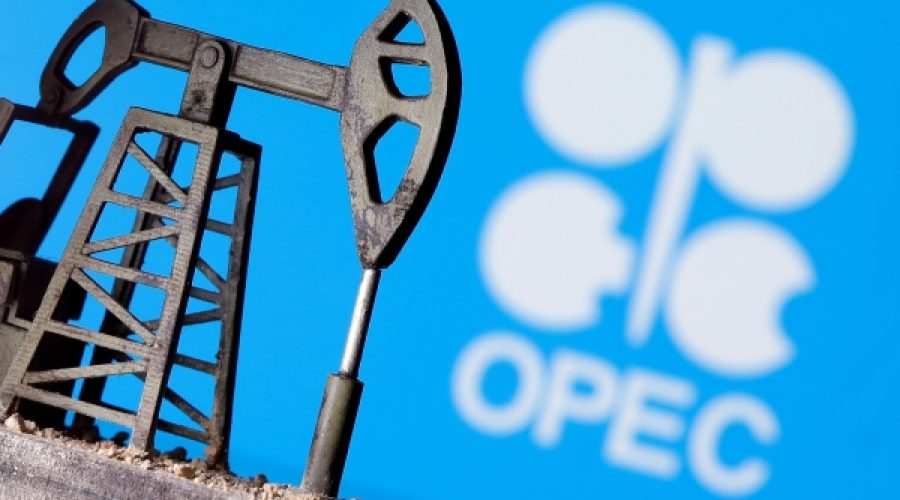افزایش قیمت نفت: پیامدهای آن برای سرمایهگذاران و کسبوکارها در بحبوحه ثبات اقتصادی جهانی در ماه ژوئن
وین: سازمان کشورهای صادرکننده نفت (اوپک) روز چهارشنبه از افزایش قابل توجه قیمت نفت در ماه ژوئن خبر داد و میانگین قیمت سبد نفتی اوپک ... $6.11 به $69.73 در هر بشکه، در حالی که اقتصاد جهانی در همین دوره ثبات را نشان میداد.
بر اساس گزارش ماهانه اوپک، قیمت نفت خام برنت افزایش یافت $5.79 به $69.80و نفت خام وست تگزاس اینترمدیت افزایش یافت. $6.39 به $67.33.
این گزارش همچنین بر رشد پایدار و مداوم اقتصاد جهانی، که با عملکرد قوی در نیمه اول سال جاری تقویت شده است، تأکید کرد. پیشبینیهای رشد همچنان ثابت ماندهاند. 2.9% برای سال ۲۰۲۵ و 3.1% برای سال ۲۰۲۶
پیشبینی میشود که پیشبینیها برای بزرگترین اقتصادهای جهان در طول سالهای ۲۰۲۵ و ۲۰۲۶ ثابت بماند. انتظار میرود ایالات متحده تا ... رشد کند. 1.7% در سال ۲۰۲۵ و 2.1% در سال ۲۰۲۶، چین تا سال 4.6% و 4.5%و هند توسط 6.5%علاوه بر این، پیشبینیها برای ژاپن، منطقه یورو، برزیل و روسیه بدون تغییر باقی مانده است.
پیشبینی میشود تقاضای جهانی نفت افزایش یابد ۱.۳ میلیون بشکه در روز در هر دو سال 2025 و 2026، که شامل افزایش ... ۱۰۰ هزار بشکه در روز از کشورهای عضو سازمان همکاری و توسعه اقتصادی (OECD) و ۱.۲ میلیون بشکه در روز از کشورهای غیر عضو OECD
در مورد عرضه، اوپک پیشبینی میکند که تولید نفت از سوی کشورهای غیرشرکتکننده در توافقنامه همکاری، به میزان ... افزایش یابد. ۸۰۰ هزار بشکه در روز در سال ۲۰۲۵ و ۷۰۰ هزار بشکه در روز در سال ۲۰۲۶، که عمدتاً توسط ایالات متحده، برزیل، کانادا و آرژانتین هدایت میشود.
در این گزارش آمده است که تولید نفت خام از سوی کشورهای عضو اوپک که در این توافق مشارکت دارند، ماهانه افزایش یافته است. ۳۴۹۰۰۰ بشکه در روز در ماه ژوئن، تقریباً به ۴۱.۵۶ میلیون بشکه در روز.
علاوه بر این، گزارش اوپک به واردات نفت خام و فرآوردههای نفتی اروپا نیز پرداخته است که ... 11%در مقابل، واردات نفت خام ژاپن کاهش یافت، اگرچه همچنان بالاتر از سطح سال گذشته بود و صادرات فرآوردههای نفتی آن نیز کاهش یافت.
در نهایت، این گزارش نشان داد که موجودی نفت تجاری در کشورهای عضو سازمان همکاری و توسعه اقتصادی (OECD) افزایش یافته است. ۳۴.۵ میلیون بشکه در ماه مه، در مجموع ۲,۷۷۱ میلیون بشکهبا این حال، این سطوح تقریباً ۱۸۴ میلیون بشکه کمتر از میانگین سالهای ۲۰۱۵ تا ۲۰۱۹، با افزایش موجودی نفت خام و فرآوردههای نفتی. — ONA
تحلیل ویژه از عمانت | بازار عمان را کشف کنید
اخیر افزایش قیمت نفت این نشان دهنده یک مزیت بالقوه برای کسب و کارها در عمان، به ویژه در بخشهایی که به درآمدهای نفتی وابسته هستند، میباشد و فرصتهایی را برای ... ایجاد میکند. افزایش سرمایهگذاری و توسعه زیرساختهابا این حال، با افزایش پیشبینیهای عرضه جهانی، کارآفرینان باید هوشیار باشند در برابر خطرات نوسان قیمتها و افزایش رقابت از سوی تولیدکنندگان غیراوپک. سرمایهگذاران هوشمند باید بر استراتژیهای تنوعبخشی تمرکز کنند در عین حال، با بهرهگیری از موقعیت منحصر به فرد عمان در چشمانداز انرژی، این کشور در حال گذار از این تغییرات است.



